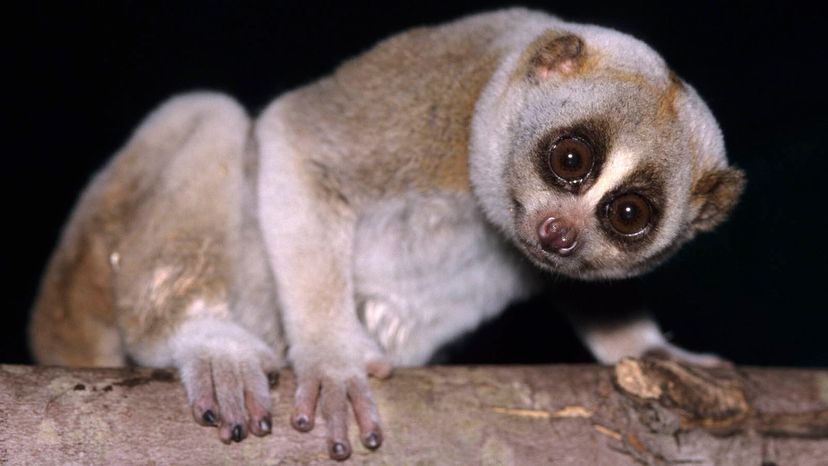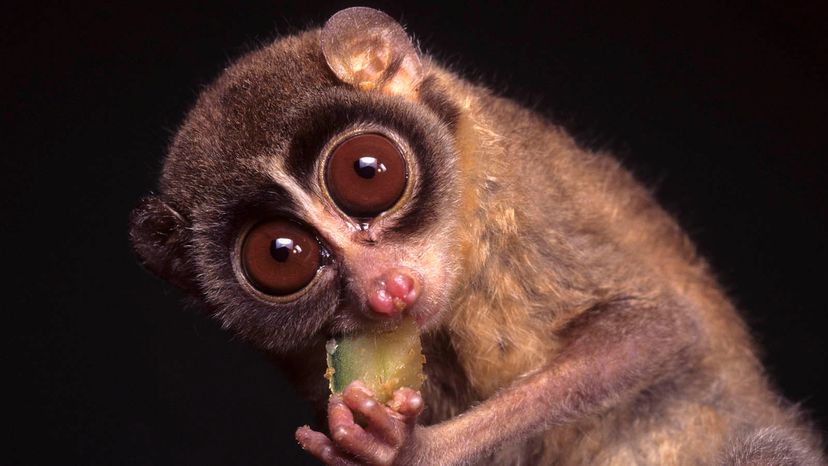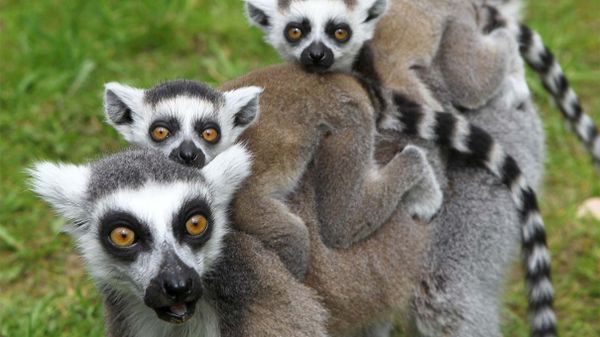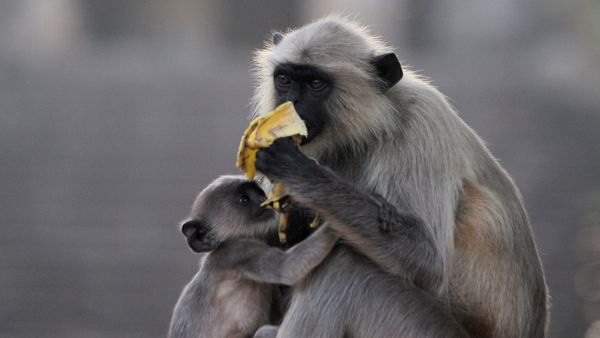
At first glance, it's easy to believe that the slow loris, a tiny primate with wide, saucer-like eyes is nothing more than a Beanie Boo come to life. But don't let that innocent face fool you. These little creatures prefer their own company, and usually bite when they feel threatened – either from humans or from other slow lorises – raising their arms and licking a highly toxic venom secreted from glands at their upper arm which pools in grooves on their canine teeth. The venom can cause necrosis (death of the tissue) or can even be fatal if not properly treated. In other words, to paraphrase William Shakespeare to our own purposes, "Though the slow loris be but little, it is fierce."
The slow loris was described in 1891 as having the "face of a bear, the hands of a monkey, [and] mov[ing] like a sloth" by American zoologist Dean Conant Worcester. The word "loris" came from the Dutch word "loeris" meaning clown, alluding to the creature's distinctive facial markings. They have small ears on their round, furry heads, with rings around their huge forward-facing eyes (which provide stereo vision). Their eyes have something called the tapedum lucidum – a light-reflecting surface behind the retina that helps them see better in the dark.
Advertisement
Their bodies are solid; they have only the stump of a tail under dense fur. Their weight varies by species – from the Bengal slow loris at 74 ounces (2,100 grams) to the Bornean slow loris at just over 9 ounces (265 grams). Their length, combined head and body, ranges from 7 to 15 inches (18 to 38 centimeters) depending on species.




